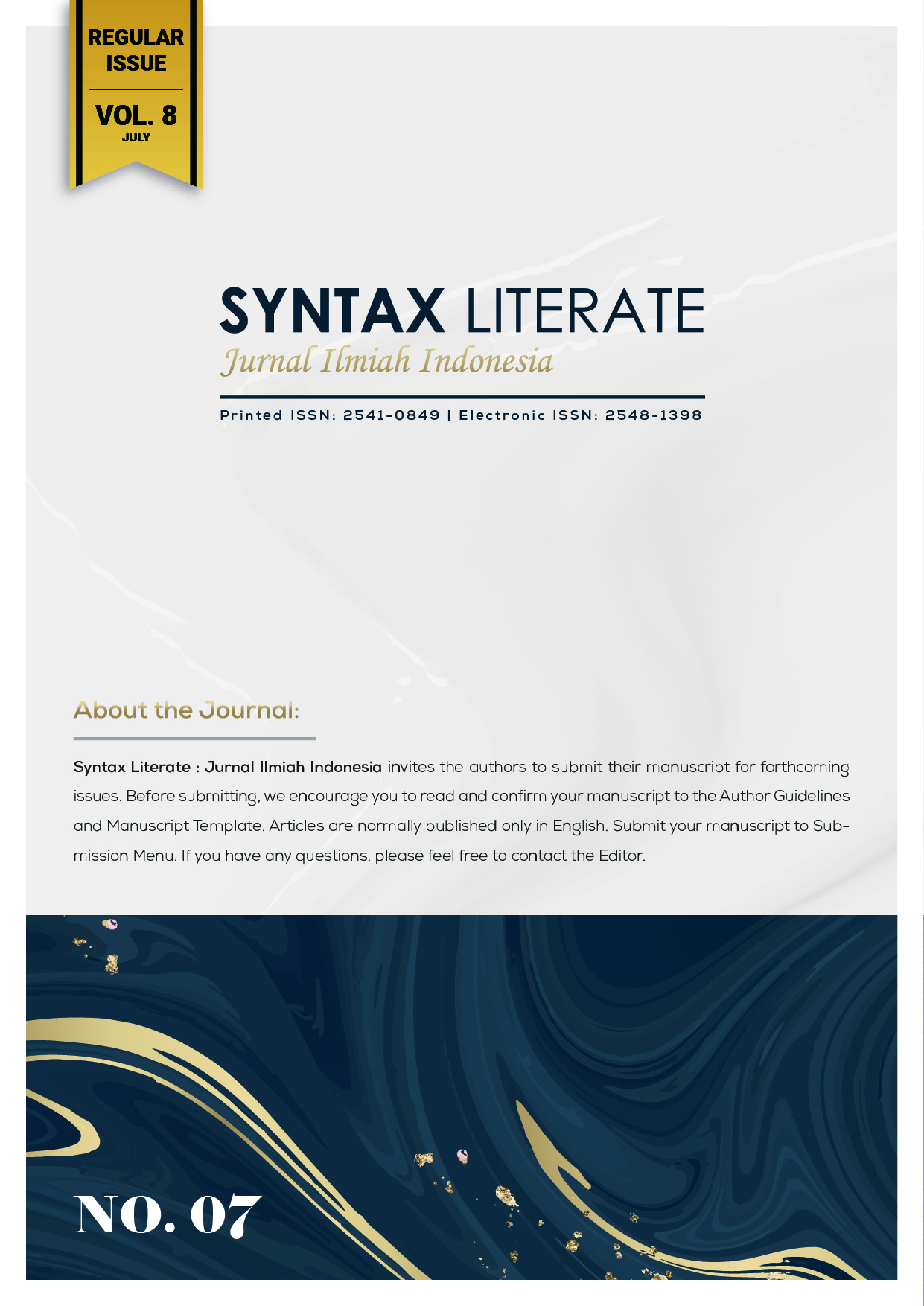Analisis Efektivitas Daya Tampung Embung Taman Firdaus Universitas Sriwijaya
Abstract
Floods occur due to reduced water catchment areas due to increased land use, both for settlements and economic activities. The purpose of this research is to analyze the storage capacity of the embankment. The Firdaus Taman Firdaus Reservoir of Sriwijaya University (UNSRI) is located in the Ogan Ilir district and is useful as a place for rainwater storage and flood control. Embung has many benefits to meet the water needs of UNSRI. The UNSRI reservoir has an area of ​​24 hectares, the west reservoir is 8 m from the bottom and 50 m long. Results of data analysis, the volume of the reservoir with a depth of 5 m with an area of ​​pond 1 covering an area of ​​423804.79 m2 can accommodate water with a storage volume capacity of 2119023.95 m3. The results of testing the average water content in the original soil (w) = 87.38 %. The test results for the average soil specific gravity (Gs) are 2.19. The results of the Atterberg limit test, the liquid limit value in soil (LL) = 57.00 %, the plastic limit in soil (PL) = 48.37 %, and the plasticity index in soil (IP) = 8.63 %. Based on the AASTHO classification, the soil in the UNSRI Firdaus Taman Embung belongs to group A-2-5, as silt or loamy gravel and sand. Meanwhile, based on the USCS classification, it is classified as Silts and Clays (CH). The results of the permeability test are the permeability value (K) = 3.034191 x 10-5 cm/s, which is low permeability.
Downloads
References
Arsyad, S.2010. Konservasi Tanah dan Air,Edisi Kedua Cetakan Kedua. IPB Press. Bogor.
Azwarman (2018). Kajian Teknis Bangunan Pelimpah Embung Pinang Merah di Kabupaten Merangin Provinsi Jambi. Jurnal Civronlit Universitas Batanghari, 3(2), 63-72. DOI: http://dx.doi.org/10.33087/civronlit.v3i2.35.
Badan Standarisasi Nasional. 2016 Metode Analisis dan Cara Pengendalian Rembesan Air untuk Bendungan Tipe Urugan, SNI 8065:2016. Jakarta.
Fitri, A., Hasan, Z. A., & Ghani, A., A. (2011). Effectiveness of Aman Lake as Flood Retention Ponds in Flood Mitigation Effort: Study Case at USM Main Campus, Malaysia. 3rd International Conference on Managing Rivers in the 21st Century: Sustainable Solutions for Global Crisis of Flooding, Pollution and Water Scarcity, Penang, Malaysia, 6 – 9 Desember 2011.
Garsia, D., Sujatmoko, B., & Rinaldi (2014). Analisis Kapasitas Tampungan Embung Bulakan untuk Memenuhi Kekurangan Kebutuhan Air Irigasi di Kecamatan Payakumbuh Selatan. Jurnal Online Mahasiswa (JOM) Bidang Teknik dan Sains, 1(1), 1-15.
Hardiyatmo, H. C., 2010. Mekanika Tanah 1 Edisi kelima. Universitas Gadjah Mada: Yogyakarta.
Kalidawir Tulungangung Jurnal Hidroteknik, 1(1), 13-19.
Kalkani, E. C., 1997. Geological conditions, seepage grouting, and evaluation of piezometer measurments in abutments of an earth dam. Engineering Geology, Vol 46 , hal. 93 -104. Karol, R. H. 2003. Chemical Grouting and Soil Stabilization. Marcel Dekker, Inc.: New York, hal. 558.
Kometa SS, Ebot MAT. 2012. Watershed degradation in the Bamendjin Area of the North West Region of Cameroon and its implication for development. J Sustain Dev 5 (9): 75-84.
Lasminto, U., Sofia, F., Butyliastri, & Mularto, L. H. (2009). Studi Potensi Tampungan Hulu DAS Sungai Sampean unutk Pengendalian Banjir dan Penyediaan Air Bersih. Jurnal Purifikasi, 10(1), 9-18.
Liu M, Hanqin T, Guangsheng C, Wei R, Chi Z, Jiyuan L. 2008. Effects of land-use and land-cover change on evapotranspiration and water yield in China during 1900-2000 (1). J Amer Water Resour Assoc 44 (5): 1193-1207.
Nan D, William J, Lawrence J. 2005. Effects of river discharge, wind stress, and slope eddies on circulation and the satellite-observed structure
Nicholson, P. 2015. Soil Improvement and Ground Modification Methods 1st Edition. Butterworth -Heinemann: United Kingdom
Peraturan Pemerintah Republik Indonesia Nomor 42 tahun 2008. (2008). Pengelolaan dan Pengembangan Sumber Daya Air. Jakarta: Sekretariat Negara.
Sarwono B., Ansori M. B., & Ratnasari, D. A. (2015). Studi Pengendalian Banjir Sungai
Taddese G. 2001. Land degradation: A challenge to Ethiopia. Environ Manag 27 (6): 815-824.
Quan, N. H., Phi, H.L., Tran, P. G., Pathirana, A., Mohanasundar Radhakrishnan, M., & Quang, C. N. X. (2014). Urban Urban Retention Basinas in a Developing City: From Theoretical Effectiveness to Practical Feasibility. 13th International Conference on Urban Drainage, Sarawak, Malaysia, 7-12 September 2014.
Travis, Q. B. & Mays, L. W. (2015). Optimizing Retention Basin Networks. Journal of Water Resources Planning and Management, 134(5), pp. 432-439. DOI: 10.1061/(ASCE)0733-9496(2008)134:5(432)
Zhang H, Wang X. 2007. Land-use dynamics and flood risk in the hinterland of the Pearl River Delta: The case of Foshan City. Intl J Sustain Dev World Ecol 14 (5): 485-92.
Copyright (c) 2023 Rivadavia Raykaru Putra, Dinar D.A. Putranto, Putri Kusuma Wardani

This work is licensed under a Creative Commons Attribution-ShareAlike 4.0 International License.











